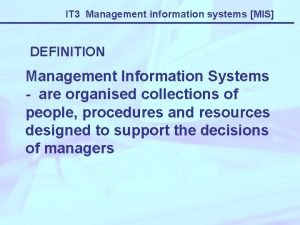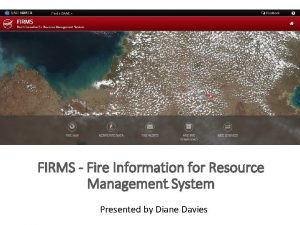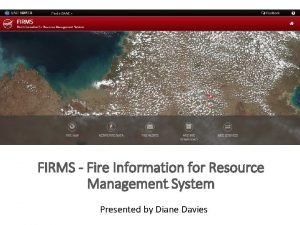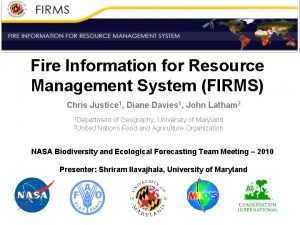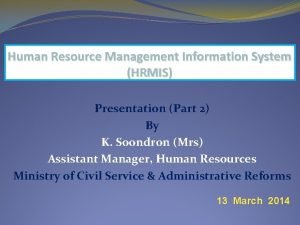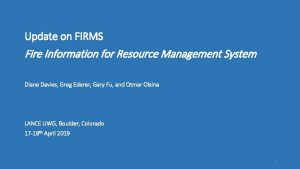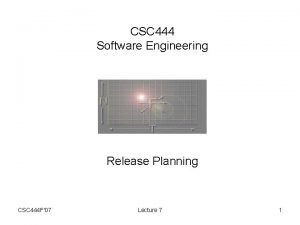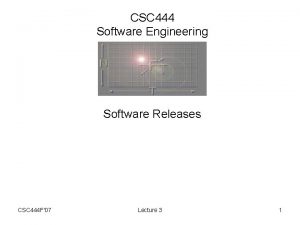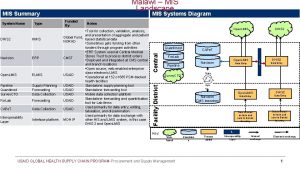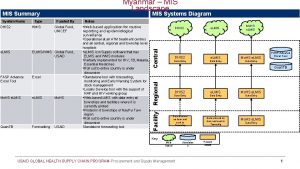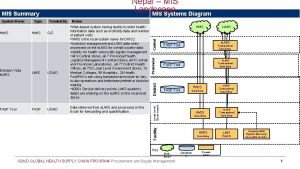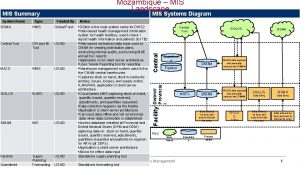MIS 444 Information Resource Management Ahituv Neumann Riley











- Slides: 11

MIS 444 Information Resource Management Ahituv, Neumann, & Riley Ch. 1: Introduction 1

Information as a Resource • Produced by information systems • Vital to the operation and management of organizations • Not a natural resource subject to great expense or political constraints • Not acquired mostly outside the organization • Potentially the most cost-effective resource Ahituv, Neumann, & Riley Ch. 1: Introduction 2

Three Basic Concepts • Information: data that has been processed and is meaningful to a user • System: a set of components that operate together to achieve a common purpose • Organization: the users of information produced by an information system belong to a system called the “organization” Ahituv, Neumann, & Riley Ch. 1: Introduction 3

Information System Structure • • Centralized Decentralized Distributed Most organizations are served by a federation of information systems, rather than a single information system Ahituv, Neumann, & Riley Ch. 1: Introduction 4

Components and Disciplines • Communication theory: coding and transmission of events • Systems analysis: logic and methods of converting data to information • Computer science & software engineering: data processing technology • Computer and information economics: economic valuation of a system Ahituv, Neumann, & Riley Ch. 1: Introduction 5

Components and Disciplines, cont’d. • Decision theory, statistics, and microeconomics: underlie computer and information economics • Cognitive psychology: human parts of the process • Artificial intelligence: machine simulation of human processes Ahituv, Neumann, & Riley Ch. 1: Introduction 6

Other Disciplines • • Management science Management theory Organizational theory General systems theory Ahituv, Neumann, & Riley Ch. 1: Introduction 7

The Successful System • • Profitable Improve Performance Applied to Major Problem (Mission) User Satisfaction Ahituv, Neumann, & Riley Ch. 1: Introduction 8

The Successful System(cont. ) “The development of an information system is not merely a technological project, for it also has managerial, organizational, and behavioral implications” Ahituv, Neumann, & Riley Ch. 1: Introduction 9

Systems • Life Consists of a continuing series of decisions. • We live, work, and function in various systems. Ahituv, Neumann, & Riley Ch. 1: Introduction 10

Critical Variables • • • User involvement User attitudes and cognitive style Top-management support Budgets User education and training Psychological climate (i. e. , culture) Organizational maturity Resource availability Organization size Etc. Ahituv, Neumann, & Riley Ch. 1: Introduction 11
 Riley riley modeli nedir
Riley riley modeli nedir Types of information system
Types of information system Management information systems definition
Management information systems definition Nasa firms fire
Nasa firms fire Nasa firms fire map
Nasa firms fire map Fire information for resource management system
Fire information for resource management system Information technology resource management
Information technology resource management What is hrmis
What is hrmis Fire information for resource management system
Fire information for resource management system Que he hecho bien proyecto de vida
Que he hecho bien proyecto de vida La madre de mi madre es mi ____
La madre de mi madre es mi ____ Mis mai a mis tachwedd
Mis mai a mis tachwedd


